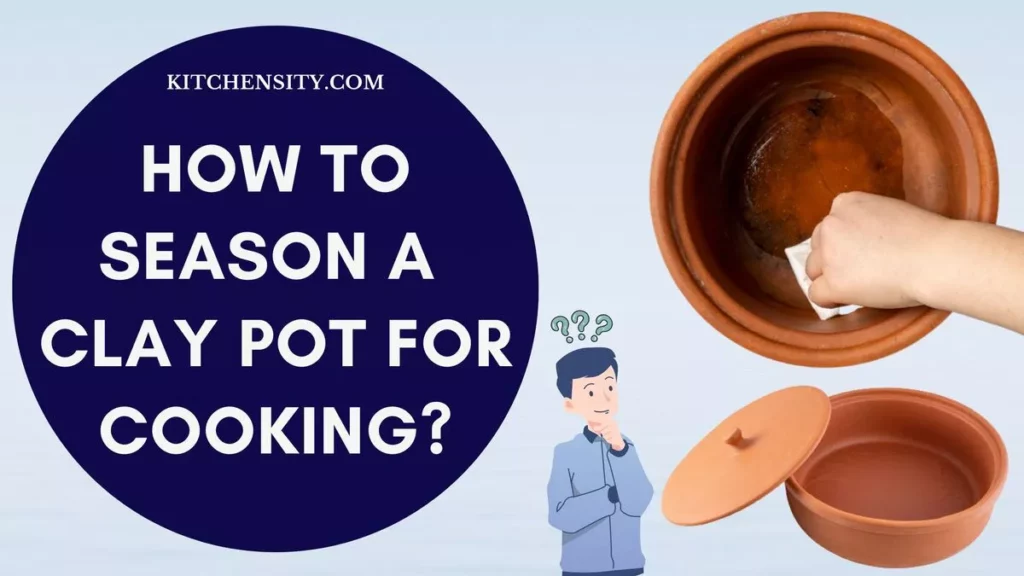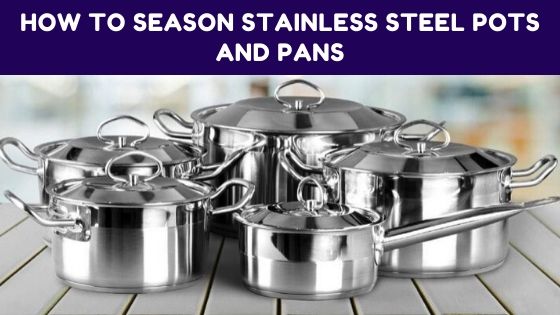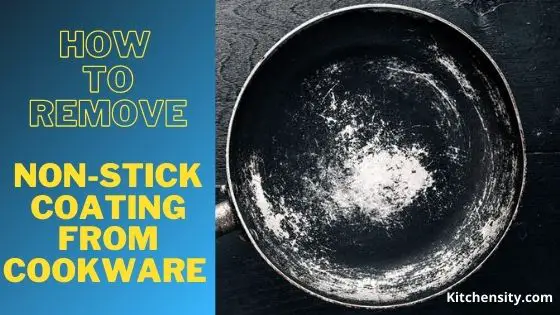If you’re a cooking enthusiast, you might have thought of using a clay pot to prepare delicious and flavorful dishes. Clay pots have been used for centuries in various cultures for their unique ability to retain and distribute heat evenly.
Seasoning a clay pot involves washing it, applying a thin layer of cooking oil inside and out, and heating it in an oven. This process creates a protective layer, enhances flavor, and improves heat distribution. Once seasoned, the pot is ready to add a unique touch to your cooking adventure.
To ensure your clay pot serves you well and imparts that distinctive taste to your food, proper seasoning is essential. In this guide, I’ll walk you through the steps to season a clay pot effectively, enhancing your culinary journey.

Table of Contents
- 1 Step-By-Step Guide To Season A Clay Pot For Cooking.
- 2 How To Season Glazed Clay Pot For The First Time?
- 3 How Do You Season A Japanese Clay Pot?
- 4 Why Seasoning Of Clay Pot Is Necessary?
- 5 How To Care For Your Seasoned Clay Pot?
- 6 Benefits Of Using A Seasoned Clay Pot.
- 7 Final Verdict On Seasoning A Clay Pot.
- 8 FAQs – How To Season A Clay Pot For Cooking?
- 8.1 Should You Soak Clay Pots Before Use?
- 8.2 How Do You Season A Clay Pot In The Oven?
- 8.3 Can I Use Soap To Clean My Seasoned Clay Pot?
- 8.4 Can I Use My Clay Pot On An Induction Cooktop?
- 8.5 Do I Need To Season My Clay Pot Every Time I Use It?
- 8.6 Can I Cook Acidic Foods In A Clay Pot?
- 8.7 How Long Does A Well-Maintained Seasoned Layer Last?
Step-By-Step Guide To Season A Clay Pot For Cooking.
Seasoning a clay pot is a simple yet crucial process that ensures optimal performance and imparts unique flavors to your dishes. Follow this detailed guide to master the art of seasoning your clay pot.
- Step 1 – Gather Your Materials: You will need warm water, a soft brush, mild dish soap, a clean cloth, and cooking oil (vegetable or grapeseed).
- Step 2 – Soak The Clay Pot: Fill the clay pot with warm water and a few drops of mild dish soap. Allow it to soak for approximately 15-20 minutes. This step helps remove any residue from the manufacturing process.
- Step 3 – Empty And Dry The Pot: Empty the pot and gently pat it dry using a clean cloth. Ensure there’s no excess moisture left inside the pot.
- Step 4 – Apply The Cooking Oil: Apply a thin layer of cooking oil to the pot’s inside and outside. Use your hands or a clean cloth to evenly coat the surfaces. This oil layer forms the basis of the seasoning.
- Step 5 – Gradually Heat The Pot: Place the oiled pot in a cold oven to prevent sudden temperature changes. Set the oven temperature to 300°F (150°C) and let the pot heat up gradually. Allow the pot to heat for about 45 minutes to an hour.
- Step 6 – Cooling It Down: Once the heating process is complete, turn off the oven and let the pot cool down inside. This gradual heating and cooling help the oil to penetrate the clay pores effectively.
- Step 7 – Repeat The Process: For new clay pots, you should repeat this seasoning process a few times or at least 2 times to build a strong seasoning layer.
- Step 8 – Initial Cooking: After seasoning, you can prepare a simple dish with minimal ingredients to enhance the seasoning process. This will help solidify the protective layer and enrich the pot’s flavor profile.
- Step 9 – Cleaning After Use: After cooking, clean the clay pot using warm water and a soft brush. Avoid using harsh detergents, as they can strip away the seasoning.
- Step 10 – Ongoing Maintenance: To maintain the seasoning, lightly coat the pot with oil after every few uses. Over time, the pot will develop a rich patina that enhances the flavor of your dishes.
Remember that the more you cook with a seasoned clay pot, the better its performance and taste will become.
Also Read – How To Clean Clay Pots?
How To Season Glazed Clay Pot For The First Time?
Seasoning a glazed clay pot might seem unnecessary due to the presence of the glaze, but it’s still a beneficial step to enhance its performance and flavor infusion. Follow these steps to properly season a glazed clay pot for the first time.
- First, wash the glazed clay pot with warm water and a few drops of mild dish soap, using a soft brush to clean both the inside and outside surfaces gently.
- Next, thoroughly rinse the pot to remove soap residue, and pat it dry with a clean cloth, ensuring there is no excess moisture.
- After that, lightly coat the interior and exterior of the pot with a thin layer of cooking oil, using a clean cloth to evenly spread the oil and ensure all surfaces are covered.
- Then, place the oiled pot in a cold oven to prevent thermal shock, and set the oven temperature to 300°F (150°C). Let the pot heat up gradually for about 45 minutes to an hour.
- Once the heating is complete, turn off the oven and let the pot cool down inside. This step allows the oil to penetrate the porous clay, even beneath the glaze.
- For glazed pots, one seasoning cycle might be sufficient. However, you can repeat the process if you desire a stronger seasoning layer.
- After seasoning, clean the pot using warm water and a soft brush, avoiding the use of soap as it could disrupt the seasoning layer.
- Finally, prepare a simple dish with minimal ingredients in the seasoned glazed clay pot. This helps solidify the seasoning and enhances the pot’s flavor-transmitting qualities.
- After each use, rinse the pot with warm water and a soft brush, and dry it thoroughly before storing it in a cool, dry place.
Also Read – How To Use Clay Cooking Pans?
How Do You Season A Japanese Clay Pot?
Seasoning a Japanese clay pot, also known as a “Donabe,” is an essential step to ensure optimal performance and to infuse your dishes with the unique flavors that this traditional cookware can offer. Here’s how to properly season a Japanese clay pot:
- First, gather warm water, mild dish soap, a soft brush, and a clean cloth. Choose a cooking oil with a high smoke point, such as vegetable or sesame oil.
- Next, wash the Japanese clay pot with warm water and a few drops of mild dish soap, using a soft brush to gently clean both the inside and outside surfaces.
- After that, thoroughly rinse the pot to remove any soap residue, and pat it dry with a clean cloth, ensuring there is no excess moisture.
- Then, lightly coat the interior and exterior of the pot with a thin layer of cooking oil, using a clean cloth to evenly spread the oil and ensure all surfaces are covered.
- Place the oiled pot on a low heat source, such as a gas stove or an electric burner, and let it heat up gradually for about 15-20 minutes. The low heat prevents thermal shock.
- Allow the pot to cool down slowly. You can move it away from the heat source or let it cool on a heat-resistant surface.
- Depending on the donabe’s condition, you may need to repeat the seasoning process a few times to build a strong seasoning layer.
- After seasoning, prepare a simple dish with minimal ingredients in the seasoned donabe. This helps further solidify the seasoning and enhance the pot’s flavor-transmitting qualities.
- After each use, clean the pot using warm water and a soft brush, avoiding the use of soap as it can disrupt the seasoning layer.
- Continue to use and care for your seasoned Japanese clay pot, reapplying a thin layer of oil and seasoning as needed.
Also Read – Disadvantages Of Cooking In Clay Pots
Why Seasoning Of Clay Pot Is Necessary?
Seasoning a clay pot is necessary to enhance the food’s flavors and prevent sticking. This process involves creating a natural, non-stick coating on the pot’s surface, which not only improves the taste of the dishes but also makes cooking and cleaning easier. It also helps improve the pot’s durability by creating a protective layer that can withstand high heat.
Seasoning ensures that heat is distributed evenly throughout the pot, resulting in more uniform cooking. It also prevents the clay pot from absorbing flavors and odors from food, maintaining the purity of each dish. So, seasoning is crucial for better cooking performance, easier maintenance, and prolonged use of a clay pot.
Also Read – Can Clay Pots Be Used On The Gas Stove?
How To Care For Your Seasoned Clay Pot?
Proper care and maintenance are essential to ensure the longevity and performance of your seasoned clay pot. Follow these guidelines to keep your clay pot in excellent condition.
- After each use, clean the pot with warm water and a soft brush. Avoid using soap, as it can disrupt the seasoning layer. If necessary, use a mild detergent and rinse thoroughly.
- Dry the pot completely after washing to prevent mold growth. Air-drying is best, but you can also towel-dry it thoroughly.
- Store the pot in a cool, dry place. Avoid stacking other pots or items on top of it, as this can damage the seasoning.
- Periodically re-season your clay pot to maintain its non-stick properties. To do this, apply a thin layer of cooking oil to the interior and exterior of the pot and heat it in a low-temperature oven for about an hour.
- Do not expose the pot to extreme temperature changes, such as placing it directly from the refrigerator to a hot stove, as this can cause cracking.
- When cooking, use wooden or silicone utensils to avoid scratching the seasoning.
Benefits Of Using A Seasoned Clay Pot.
Cooking with a seasoned clay pot offers a range of advantages that elevate your culinary experience and enhance the flavors of your dishes. Here are the key benefits of using a properly seasoned clay pot:
- The porous nature of clay allows for natural steam circulation, which helps to lock in moisture and flavors. This results in dishes that are more flavorful and aromatic.
- A well-seasoned clay pot develops a natural non-stick surface over time, reducing the need for excessive oil or fat when cooking.
- Clay pots distribute heat evenly, ensuring food cooks uniformly without hot spots. This helps to prevent burning or undercooking.
- Clay retains heat well, keeping food warm for longer periods after cooking.
- The gentle heat and steam circulation in clay pots help preserve food’s nutrients better than other cooking methods.
- Clay pots are made from natural materials and are biodegradable, making them an environmentally friendly choice for cooking.
- Clay pots can be used on stovetops, ovens, or even open fires, making them versatile for various cooking methods.
Also Read – Benefits Of Clay Pot Cooking
Final Verdict On Seasoning A Clay Pot.
In the world of cooking, seasoning a clay pot is more than a step – it’s a journey that connects tradition and taste.
Through seasoning, a simple pot transforms into a flavor enhancer and a link to the past. It’s not just about protection; it’s about adding history to every meal.
A seasoned clay pot is like a storyteller. Layers of oil and heat bring the expertise of generations into your kitchen. The pot’s porous walls turn ordinary ingredients into something extraordinary, merging the old and the new.
So, as you season your clay pot, remember you’re nurturing a special bond between your pot and your food. With each layer, you’re embracing tradition and making every dish a timeless delight.
Also Read – Glazed Vs Unglazed Clay Pots
FAQs – How To Season A Clay Pot For Cooking?
-
Should You Soak Clay Pots Before Use?
Yes, soaking clay pots before use helps remove impurities and prevents cracking during cooking; enhancing their performance and longevity.
-
How Do You Season A Clay Pot In The Oven?
Begin by cleaning it thoroughly. Next, apply a thin layer of cooking oil to both the interior and exterior surfaces. Then, place the pot in a cold oven, gradually increasing the temperature to around 300°F (150°C) and letting it heat for about 45 minutes to an hour, creating a protective seasoning layer.
-
Can I Use Soap To Clean My Seasoned Clay Pot?
It’s best to avoid using soap as it might break down the seasoning. Stick to warm water and a soft brush.
-
Can I Use My Clay Pot On An Induction Cooktop?
No, clay pots are not compatible with induction cooktops. They work best on gas stoves or in ovens.
-
Do I Need To Season My Clay Pot Every Time I Use It?
No, once your clay pot is properly seasoned, you only need to reapply oil if you notice the seasoning wearing off.
-
Can I Cook Acidic Foods In A Clay Pot?
It’s not recommended, as acidic ingredients might interact with the clay and affect the flavor of your food.
-
How Long Does A Well-Maintained Seasoned Layer Last?
With proper care, the seasoning can last for several months before needing a touch-up.
Katrina Smith is a seasoned expert with over 25 years of experience in all things related to cooking and the kitchen. As an avid cook and kitchen enthusiast, she is passionate about sharing her knowledge and expertise on cookware, kitchen appliances, kitchen tips, and kitchen staples.
Through her articles and reviews, Katrina aims to inspire and help others improve their cooking skills, experiment with different ingredients, and invest in quality cookware and appliances.

![How To Season And Clean Cast Iron Cookware? [4 Effective Ways] 3 How To Season And Clean Cast Iron Cookware](https://www.kitchensity.com/wp-content/uploads/2020/06/How-To-Season-And-Clean-Cast-Iron-Cookware.jpg)

![Stainless Steel Vs Nonstick Vs Ceramic Cookware Set [An Ultimate Guide 2023] 5 Stainless Steel vs Nonstick vs Ceramic Cookware Set](https://www.kitchensity.com/wp-content/uploads/2019/09/Stainless-Steel-vs-Ceramic-vs-Nonstick-Cookware-Sets-e1621083482728.jpg)

![What Pans Can You Use Cooking Spray On? [Ultimate Guide] 7 Types of pans with which cooking spray can be used](https://www.kitchensity.com/wp-content/uploads/2023/02/What-Pans-Can-You-Use-Cooking-Spray-On.jpg)
